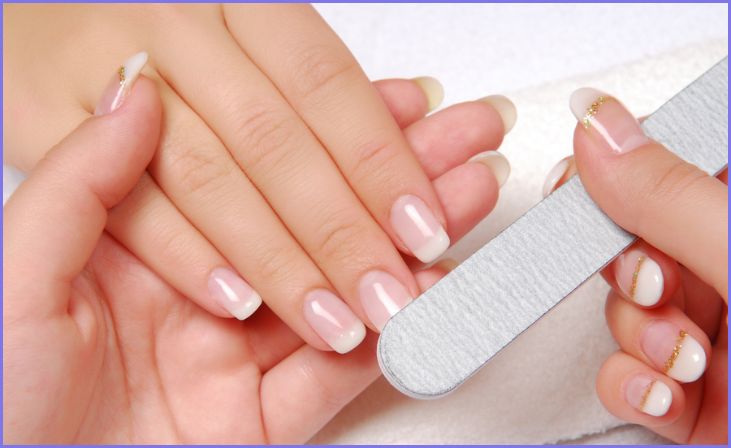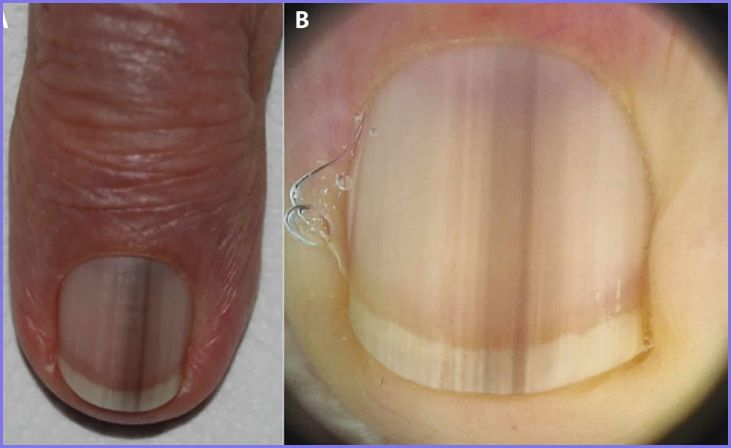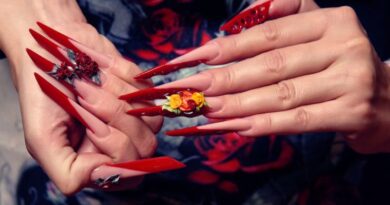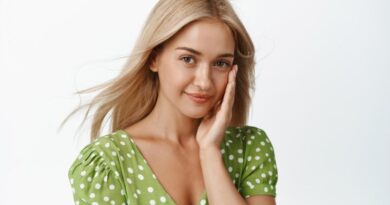What Does a Black Line on Your Nail Mean – The presence of a black line on your nail can be a cause for concern, prompting the need for understanding its potential implications. Nails, often overlooked, play a crucial role in reflecting overall health. This outline explores the significance of black lines on nails, delving into their various causes, diagnostic procedures, and treatment options.
From traumatic injuries to melanonychia, we will navigate through the intricacies of nail health and provide insights into when seeking professional advice becomes imperative. By unraveling the mysteries behind these black lines, we aim to empower individuals with knowledge that fosters proactive care and early intervention for optimal nail well-being.
Importance of nail health

Nail health is a critical aspect of overall well-being, often serving as a window into one’s internal health. The importance of nail health lies in its potential to act as an indicator and diagnostic tool for various underlying conditions. Well-maintained nails not only contribute to aesthetic appeal but also offer valuable insights into systemic health. Changes in nail color, texture, or shape can signify deficiencies, infections, or even serious disorders.
Regular observation of the nails can aid in early detection of health issues, allowing for prompt medical attention and intervention. Additionally, proper nail care and hygiene contribute to the prevention of infections and traumas, promoting overall hand health. Therefore, understanding and prioritizing nail health is not merely cosmetic; it is a proactive approach to maintaining a holistic and vigilant stance on one’s physical well-being.
Also, Read – How to make nails stronger
Common Causes of Black Lines on Nails

- Trauma or Injury:
- Accidents, injuries, or trauma to the nail can cause bleeding underneath the nail bed, resulting in a black line.
- Subungual Hematoma:
- Blood collecting under the nail due to trauma, causing a dark discoloration. It’s often associated with significant impact or crushing injuries.
- Melanonychia:
- A condition characterized by dark lines on the nails, which can be benign or related to melanoma. Changes in pigmentation may be due to various factors, including genetics.
- Melanoma:
- A form of skin cancer that can affect the nail matrix, leading to the development of a dark, irregularly shaped line on the nail.
- Fungal Infections:
- Certain types of fungal infections can cause black lines or spots on the nails. These infections often occur in a warm and moist environment.
- Medications:
- Some medications may cause changes in nail pigmentation, leading to the appearance of black lines. Chemotherapy drugs, in particular, are known to affect nail health.
- Nutritional Deficiencies:
- Inadequate levels of certain vitamins and minerals, such as B vitamins or iron, can result in changes in nail color, including the development of black lines.
- Systemic Diseases:
- Underlying health conditions like lupus or endocarditis can sometimes manifest with black lines on the nails as a secondary symptom.
Also, Read – Why Are My Nails Yellow
Identifying and Differentiating Black Lines

- Observation and Assessment:
- Color Variations: Note the specific color of the black line. It could range from dark brown to black, and variations may indicate different causes.
- Width and Thickness: Measure the width and thickness of the line. Sudden changes may be indicative of certain conditions.
- Pattern Recognition:
- Continuous Line: A continuous, straight black line may suggest a subungual hematoma or a benign melanocytic streak.
- Irregular or Changing Patterns: Irregularities, jagged edges, or changes in the pattern may raise concerns about melanoma and require prompt attention.
- Location on the Nail:
- Beneath the Nail (Subungual): A black line under the nail is often associated with trauma, hematoma, or melanoma.
- On the Nail Plate (Longitudinal): If the line runs along the length of the nail, it may be related to melanonychia or other systemic factors.
- Associated Symptoms:
- Pain or Discomfort: Assess if there is any pain or discomfort associated with the black line, as this can provide additional clues.
- Changes in Nail Shape: Note if there are any alterations in the shape or structure of the nail.
- Professional Evaluation:
- Dermatologist or Nail Specialist: Seek the expertise of a dermatologist or a nail specialist for a thorough examination and, if necessary, diagnostic procedures.
- Dermoscopy:
- Detailed Examination: Dermoscopy involves examining the nail with a specialized tool to observe structures not visible to the naked eye, aiding in the diagnosis of melanoma or other pigmentation issues.
- Biopsy or Imaging (if applicable):
- Nail Biopsy: In cases of uncertainty, a nail biopsy may be conducted to obtain a sample for microscopic examination.
- Imaging Techniques: X-rays or other imaging methods may be employed to assess the extent of trauma or underlying issues.
Treatment Options

- Trauma-Related Black Lines:
- Conservative Management: For minor traumas, allowing the nail to grow out naturally and practicing good nail hygiene can be sufficient.
- Nail Protection: Protect the affected nail from further trauma by avoiding activities that may cause additional injury.
- Subungual Hematoma:
- Drainage: In cases of painful subungual hematoma, a healthcare professional may drain the accumulated blood to relieve pressure and pain.
- Melanonychia:
- Monitoring for Changes: If the black line is due to benign causes, regular monitoring for changes in color, width, or shape may be recommended.
- Surgical Intervention (if suspicious): Suspicious cases, especially if melanoma is suspected, may require surgical removal of the affected tissue.
- Fungal Infection Treatment:
- Antifungal Medications: If a fungal infection is identified, antifungal medications, either topical or oral, may be prescribed.
- Improved Hygiene: Emphasize proper nail care and hygiene practices to prevent fungal infections.
- Medication-Induced Changes:
- Medication Adjustment: If black lines result from medication side effects, consult with a healthcare provider to explore alternative medications or adjust dosages.
- Nutritional Deficiencies:
- Supplementation: Address nutritional deficiencies by incorporating supplements or dietary changes to ensure adequate intake of essential nutrients.
- Systemic Disease Management:
- Underlying Condition Treatment: For cases linked to systemic diseases, managing the underlying condition is crucial for addressing nail health.
- Hormonal Changes:
- Hormonal Balancing: In cases where hormonal changes contribute to black lines, maintaining hormonal balance through appropriate medical interventions may be necessary.
When to Seek Medical Attention

- Changes in Color or Pattern:
- If there are sudden changes in the color or pattern of the black line, especially if it becomes irregular or exhibits multiple colors, as this could indicate a more serious issue.
- Persistent Pain or Discomfort:
- If the black line is accompanied by persistent pain or discomfort, it may signal an underlying problem that requires professional evaluation.
- Rapid Growth of the Black Line:
- If the black line grows rapidly or if there is a sudden increase in its width, it could be a cause for concern and should be addressed promptly.
- Associated Symptoms:
- If there are additional symptoms such as swelling, inflammation, or changes in the surrounding skin, seeking medical attention is advisable.
- Past History of Skin Cancer or Melanoma:
- Individuals with a history of skin cancer or melanoma should be particularly vigilant and seek prompt medical attention for any changes in their nails.
- Systemic Diseases:
- If there is an underlying systemic condition or disease and changes in the nails are observed, consultation with a healthcare professional is essential.
- Previous Unsuccessful Home Treatment:
- If attempts at home remedies or over-the-counter treatments have not alleviated the issue, seeking professional advice is recommended.
- Fungal Infections:
- If there are signs of a persistent or worsening fungal infection, medical attention is necessary for proper diagnosis and treatment.
Conclusion (What Does a Black Line on Your Nail Mean)
In conclusion, understanding the significance of black lines on nails is vital for proactive health management. While some cases may be benign, others could indicate serious underlying issues. Timely professional assessment, especially when observing changes in color, pattern, or experiencing discomfort, is paramount. Prioritizing regular check-ups and maintaining good nail care practices empower individuals to address potential concerns early, ensuring optimal nail health and overall well-being.
FAQs
Yes, in some cases, a black line on the nail may be associated with melanoma. Any suspicious changes should prompt immediate medical evaluation.
Factors like color, width, and changes over time are crucial. Consult a healthcare professional for a precise diagnosis and differentiation.
While trauma-related lines are often benign, monitoring for changes and seeking medical attention for persistent pain or irregularities is recommended.







